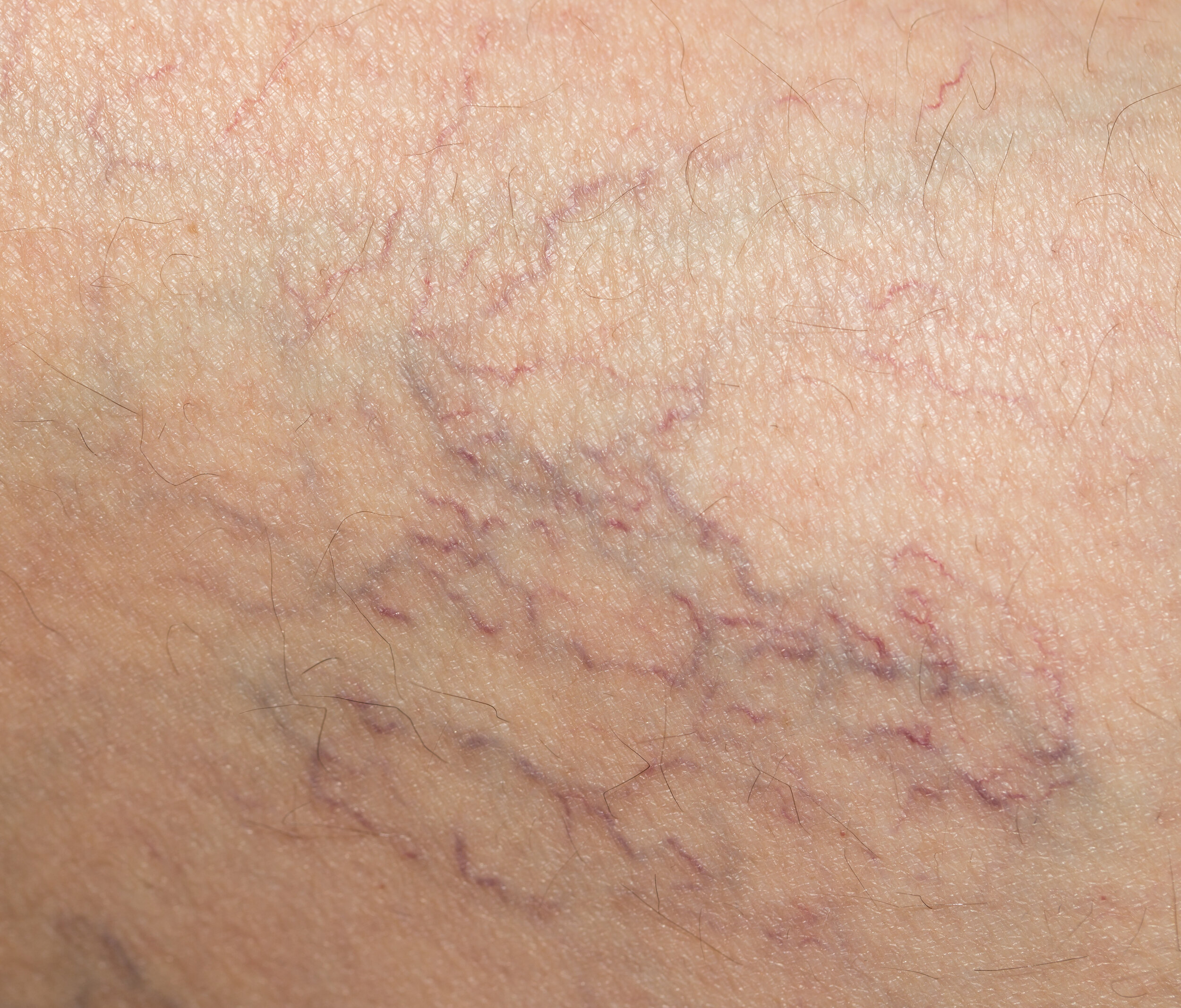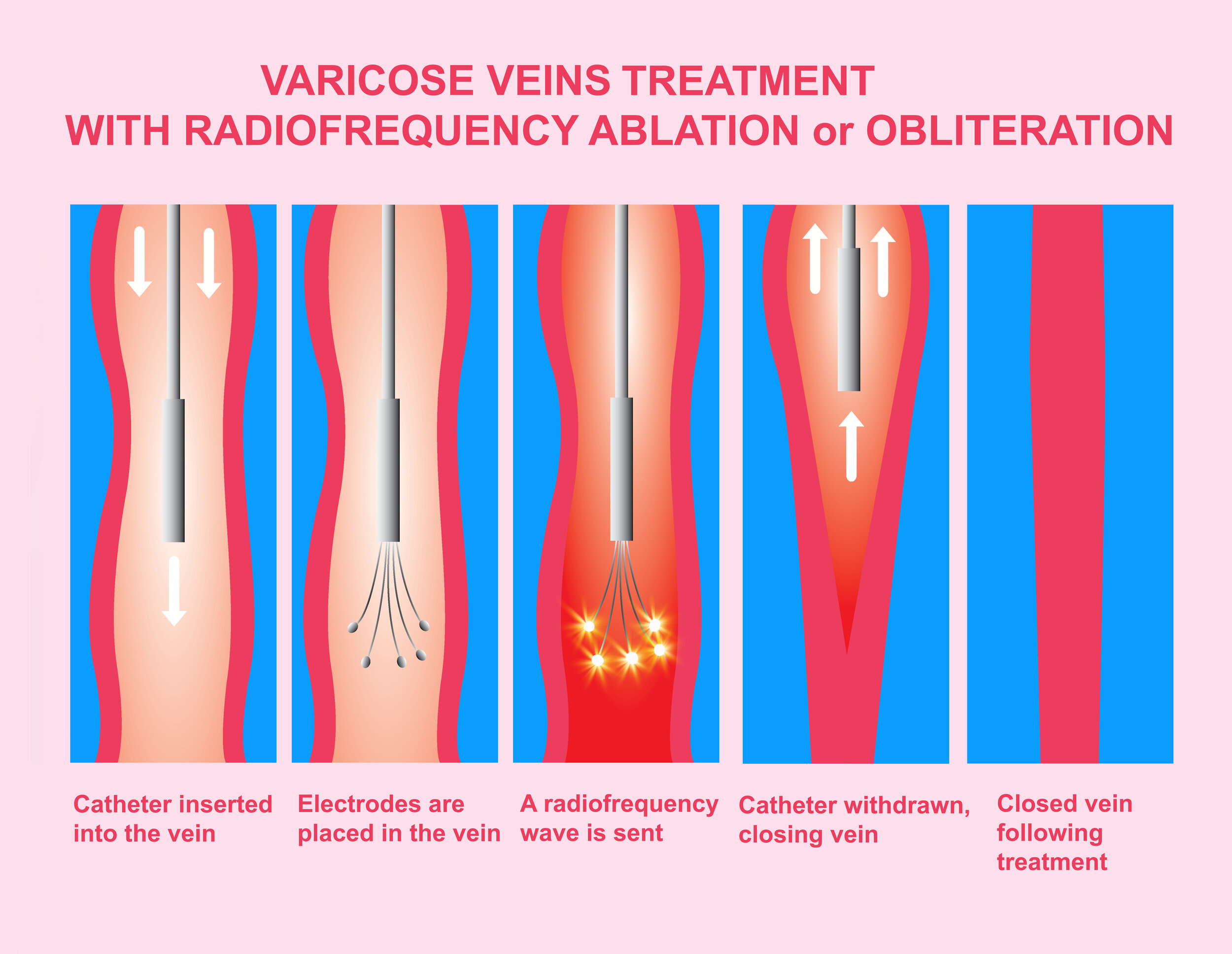Varicose Veins
Varicose veins are swollen, twisted blood vessels most commonly found in the legs, often presenting as bulges of a dark purple or blue colour. They are a result of blood pooling (stasis) in the veins due to a weakness of the vein’s wall and/or valve damage in the leg (venous insufficiency). Varicose veins can be a cosmetic issue, however when they become painful or associated with swelling, cramps or skin discolouration /eczema, you should seek medical advice.
Symptoms can include:
Pain especially after sitting or standing for prolonged periods of time
Heavy feeling in your legs
Restless legs
Burning sensation around the veins
Itching
Skin discoloration/brown staining around a varicose vein
Rarely bleeding, spontaneous bruising, or thrombophlebitis (hard and tender varicose veins)
In rare cases varicose veins can lead to complications such as ulcers, blood clots or bleeding from a burst vein close to the skin, which may severely affect quality of life. SMC provides a variety of the latest minimally invasive procedures to treat varicose veins, the choice and combination of which will depend on each individual case.
Symptoms can worsen throughout the day and are partially relieved by elevating the legs or wearing compression stockings.
Sometimes varicose veins can clot and become painful, hot, hard and discoloured. This is an indication of thrombophlebitis, a condition not as serious as DVT which gets better on its own within a few days or weeks. Clots associated with phlebitis are not dangerous; as they are limited to surface veins they don’t normally travel to the heart or lungs and cause life-threatening conditions. Deep Vein Thrombosis (DVT) refers to clots that form in the deep veins, which can then travel to the heart or lungs and could become life threatening.
Spider Veins
Spider veins (also called telangiectasias) differ from varicose veins, however venous insufficiency is the underlying cause for both problems. Spider veins are smaller, thinner veins closer to the skin that may be raised or flat. They can present as a blue, purple or red colour and are easily visible on the legs and face. Spider veins form when structural abnormalities in the blood vessels prevent blood from being pushed back to the heart, leading to stasis (blood pooling) and venous reflux (backflow of blood).
Spider veins are often a cosmetic issue, however they can cause pain and discomfort depending on the severity and the presence of larger varicose veins. Compression therapy is usually recommended before any procedure is undertaken. Spider veins can be treated with liquid or foam sclerotherapy, and compression stockings should be worn for several days.
Sclerotherapy for cosmetic spider veins may not be covered by your insurance company, so it is advisable to check before any treatment is carried out.
Progression of Venous Insufficiency
I Telengectasias (spider veins) reticular veins
II Varicose veins
III Edema
IV Skin changes: pigmentation, hemociderin staining, lipodermatosclerosis
V Healed venous ulceration
VI Active venous ulceration
Treatment Options
A range of options exist for the treatment of venous insufficiency and varicose veins:
VenaSeal Closure
Sclerotherapy Including DGFS and/or Liquid
Photoderm and dermal laser therapy
Compression stockings
Phlebectomies
Endovenous Laser (EVLT) and Radiofrequency Ablation Closure
Radiofrequency Ablation
Radiofrequency ablation is a minimally invasive treatment for varicose veins. Ablation means heat is used to damage the tissue, which makes scar tissue form, similar to an EVLT procedure. This technique uses radiofrequency energy instead of laser energy to heat up and close the vein. The blood is then redirected into other surrounding blood vessels. Radiofrequency ablation is a day-case procedure, meaning the patient can walk in and walk out the same day.
Endovenous Laser Therapy (EVLT)
Endovenous laser treatment is a minimally invasive ultrasound-guided technique used for treating severe varicose veins. EVLT is used to seal off defective superficial saphenous veins, eliminating the source of surface varicose veins. This method uses heat generated by radiation (laser) to create scar tissue and close the vein. The laser fibre is inserted into the vein via a catheter, which is activated and then pulled back slowly. EVLT is a day-case procedure, meaning the patient can walk in and walk out the same day without any lengthy and costly hospital charges.
Endovenous Laser Therapy
Radiofrequency Ablation
Sclerotherapy
Sclerotherapy is a procedure used to treat blood vessels or blood vessel malformations and also those of the lymphatic system. A solution (liquid or foam) is injected to irritate the lining of the vessel, causing the vein to collapse and the blood to clot. This method is often used to treat smaller varicose or spider veins, however a foam solution can be used for larger veins.
Phlebectomy
Phlebectomy is a minimally invasive technique used to treat varicose veins that lie just below the surface of the leg. Small incisions are made in the skin through which the vein is removed with the use of a clamp. Phlebectomies are completed as a day surgery procedure, under the use of local anaesthetic and usually does not require stitches.
Phlebectomy
Liquid Sclerotherapy
VenaSeal Closure System
The VenaSeal closure system is a recently developed technique to treat varicose veins. The procedure uses an injectable medical adhesive which treats the underlying source of varicose veins, reversal of venous blood flow or reflux in the great and small saphenous vein. The method is non-thermal, non-tumescent and non-sclerosant, offering a quick recovery time and minimised pain and discomfort during the procedure.
Venaseal Closure System













